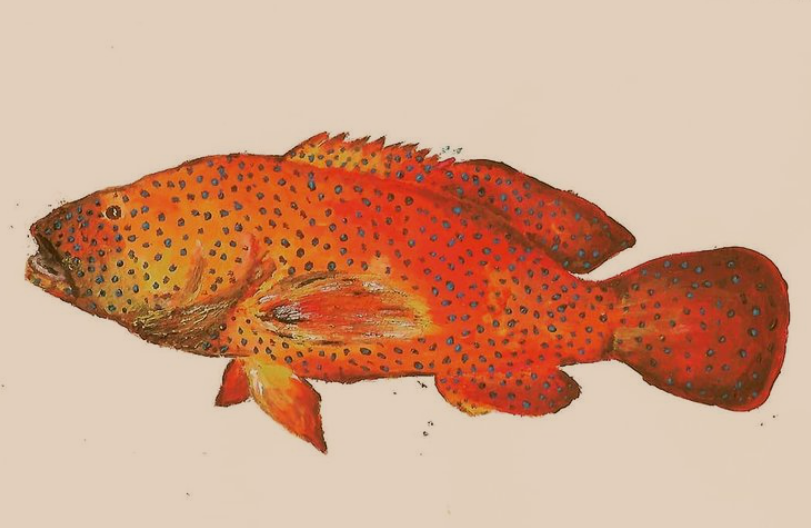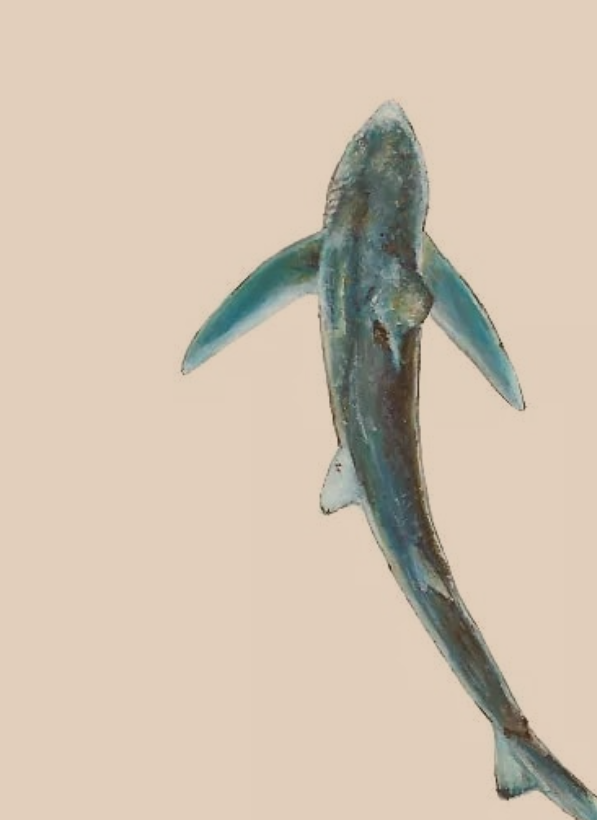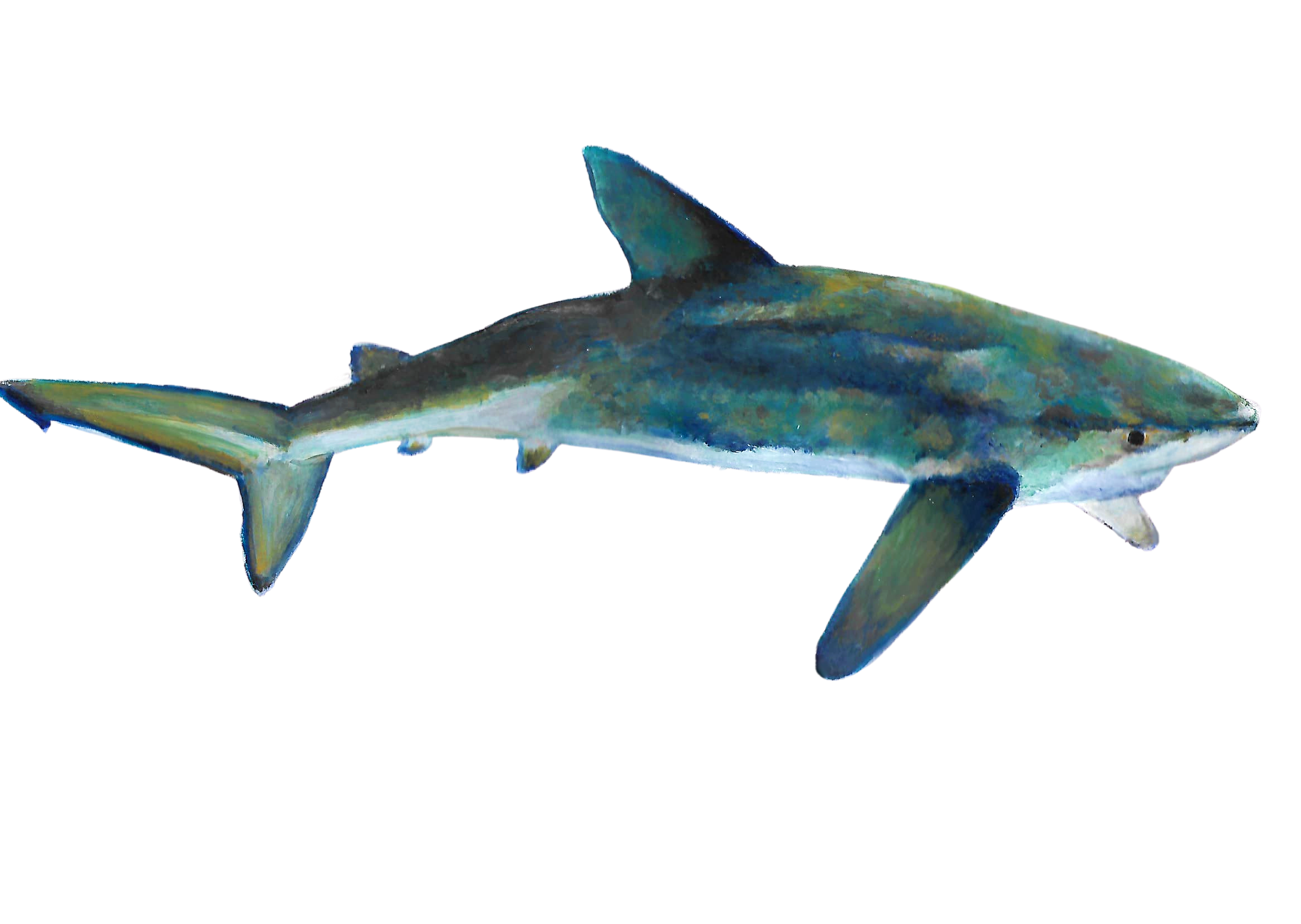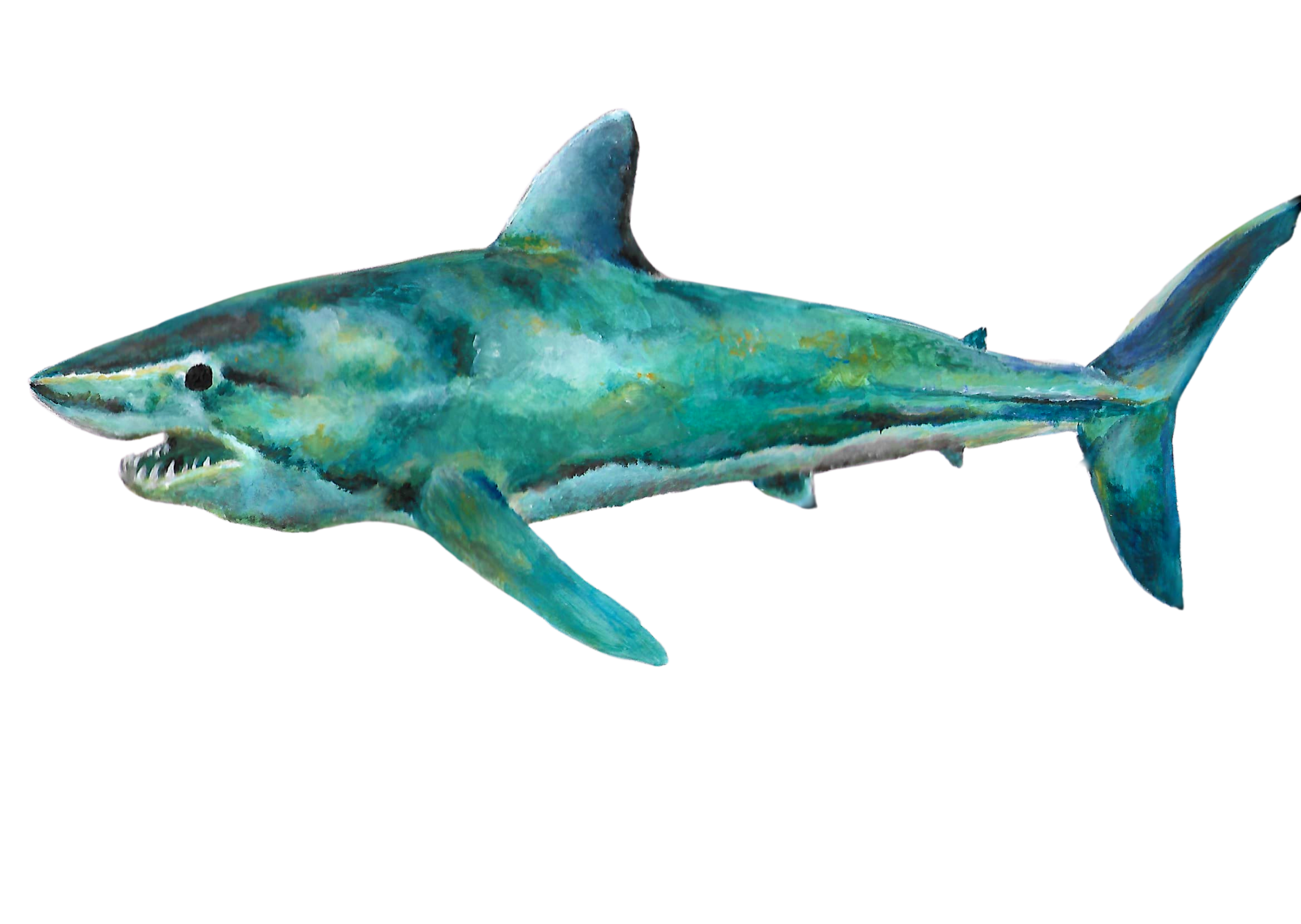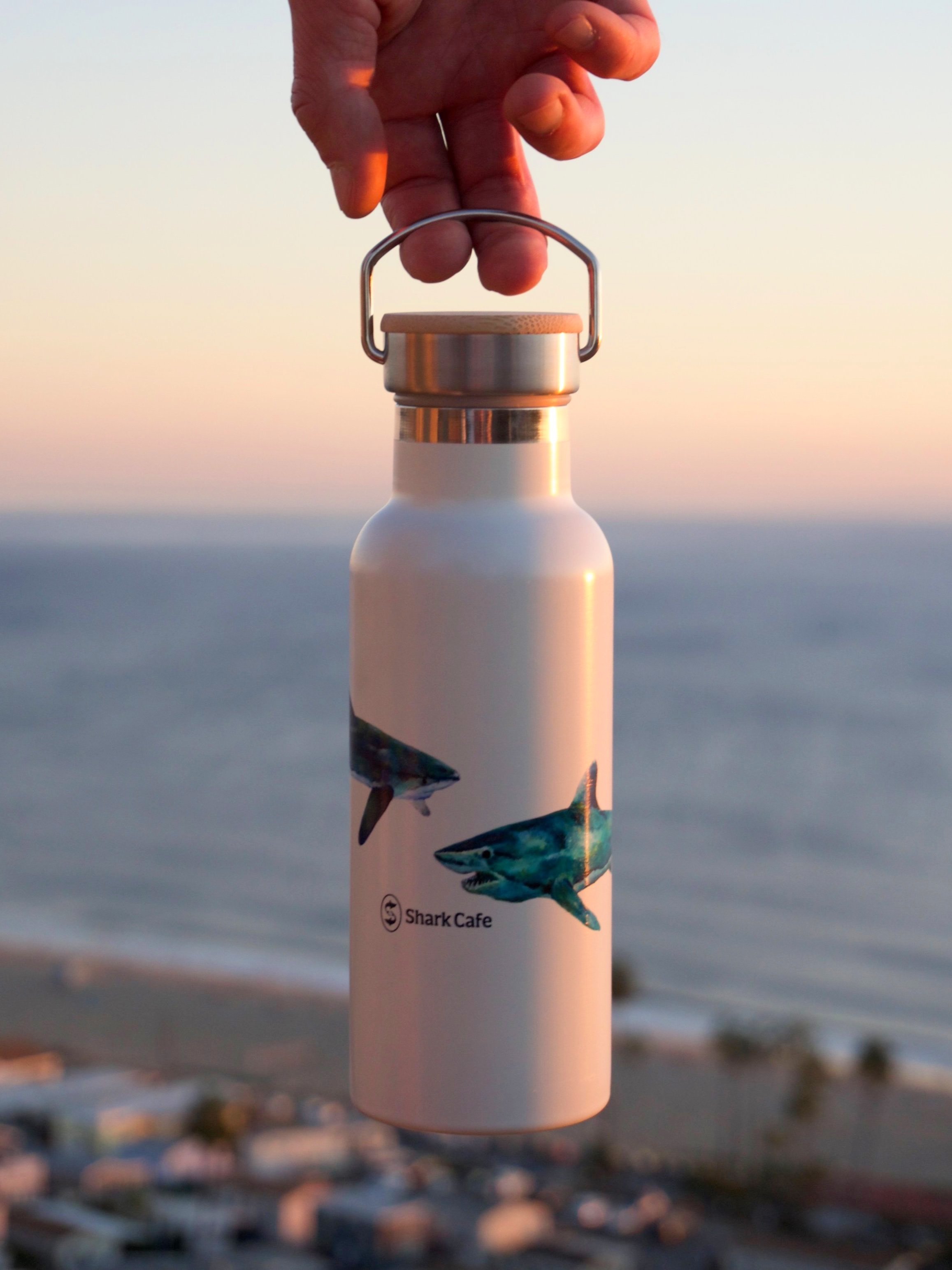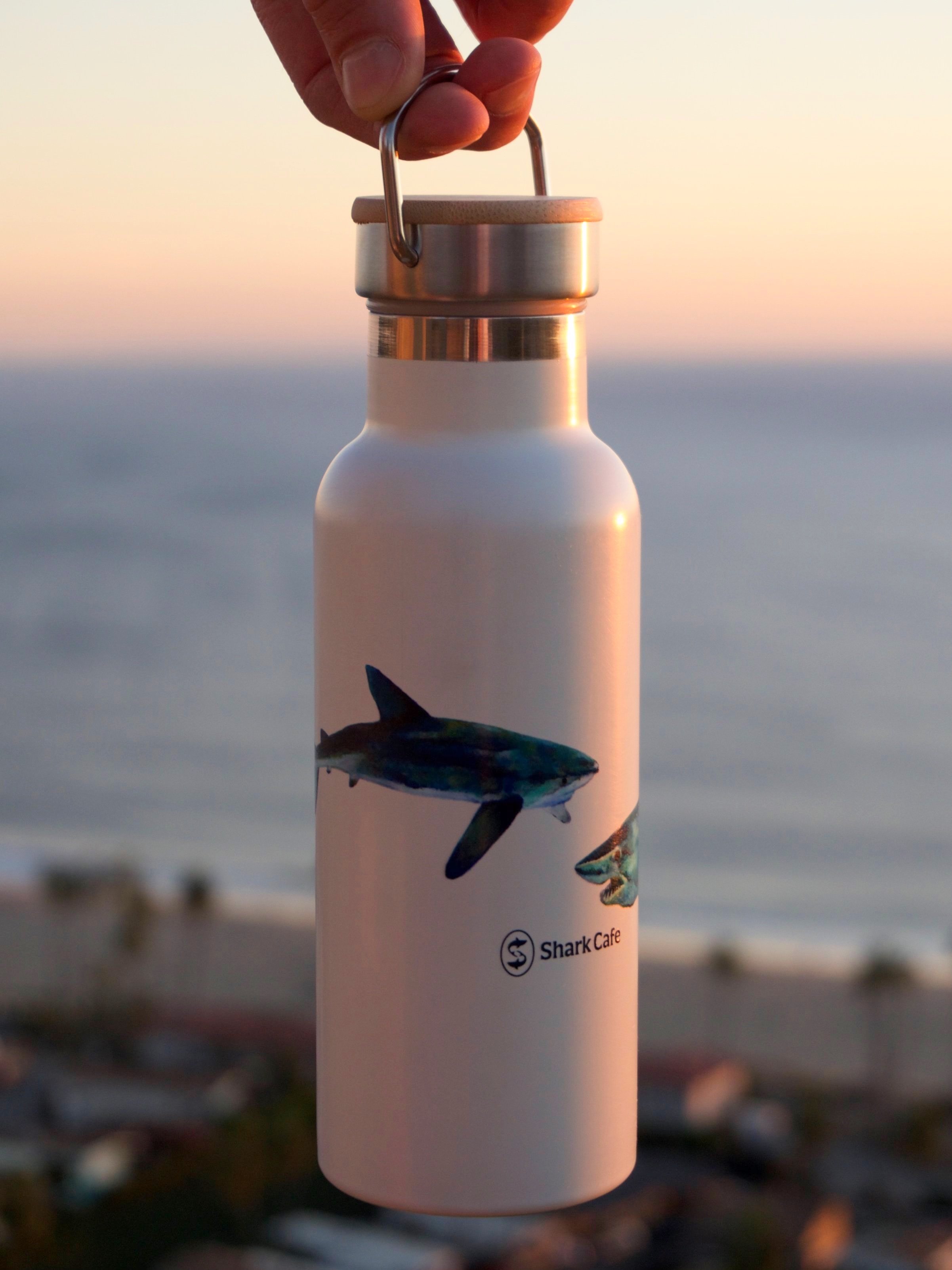Art for Activism: Alex Aspinall
Our Winter artist spotlight is Alex Aspinall, the UK-based artist behind our Mako and Blue Reusable Water Bottle. Alex wears many hats - artist, ocean conservationist, children’s book author - but her passion for the marine world shines through everything she does. She believes that art can be an important tool in communicating more complex issues, and her paintings of sharks aid in speaking up for the threats these species face, like overfishing.
SC: What initially drew you to the underwater world and studying marine biology?
AA: Like a lot of kids, I loved nature shows and was absolutely obsessed with Shark Week. It was a childhood dream to one day become a marine biologist, and I think it was the magnitude of the ocean and the variety of underwater life that drew me in. However, things didn’t go as planned and I eventually found myself working a boring office job, but still dreaming of the ocean. I eventually decided to follow that dream and was fortunate enough to gain a marine biology MSc, which led to lots of incredible opportunities!
SC: Were you always interested in painting, or did you discover that passion later in life?
AA: I’d say painting is definitely something I discovered later in life. I realized I enjoyed creating art towards the end of high school, but never really set the time aside to create anything outside of art class. As I got older, I only got more into art through creating silly gifts for friends, such as painting their pets as medieval rulers. From there, I naturally progressed to painting marine life in my free time.
SC: You've had the opportunity to take part in some unique research trips, from taking skin samples from blue sharks in the UK to studying whale sharks in Australia. What was the most interesting thing you learned from these experiences?
AA: I’ve learned that despite meticulous planning and preparation, something will usually go wrong. This is especially true when you’re in the field and there are so many factors that are totally out of your control: weather (especially if you’re in the UK), sea state, sharks (you can spend hours chumming and they may not always show up!). It’s so important to have a good team that supports one another, especially when things aren’t going to plan.
SC: From your different experiences with sharks, do you have a favorite shark species?
AA: I’d have to say blue sharks! I was lucky enough to snorkel with them off the coast of Wales. In comparison to other species that I’ve dived with, they were so bold and inquisitive, coming right up to us and really checking us out! It was even more special to realize that I could have that kind of experience so close to home, in the UK.
SC: What conservation issues are you the most passionate about?
AA: I think overfishing is a huge and incredibly complex issue, and we need better fisheries management across the world and more no-take marine reserves. Rising sea temperatures are also a huge concern. I’ve seen coral bleaching firsthand and the effects are devastating, and not just for the marine life, as many coastal populations are so reliant on their reefs to generate income via tourism.
SC: How do you think art can contribute to conservation efforts?
AA: For me, science communication is so important. There’s so much incredible research being done, but often the resulting papers are, for the most part, only read by other scientists. Art can be a great way to bridge that gap and make science more accessible for all audiences. In the UK, we’ve seen the huge impact that the David Attenborough series ‘Blue Planet’ had. Art, including filmmaking, is the perfect way to make complex topics a bit more digestible.
SC: You authored and illustrated a children's book, Wilbur The Lost Whale. What was your inspiration there?
AA: I wanted to raise awareness of the threats to marine life amongst the younger generation and their parents. I thought a children’s book would be perfect to encourage the audience to build an emotional connection to the ocean. I’d been inspired by the teaching on my MSc course, which had highlighted the importance and beauty of different marine ecosystems, so in order to explore as many parts of the ocean, I decided to follow a young whale on his migration, who encountered different threats along the way, ranging from the effects of overfishing, pollution and climate change. It wasn’t all doom and gloom, as Wilbur realizes some humans do want to help him!
SC: Tell us about your process in creating the mako and blue shark acrylic paintings.
AA: I really enjoyed creating these pieces! I usually start by looking for some inspiration online, whether that be watching documentaries of the species I’m interested in or looking at photos on Instagram. I was fortunate enough to have some of my own pictures of blue sharks, so I started there, just trying to get their proportions and colouring clear in my head. Then I sketch the sharks out in a few different positions to see what works best and just start painting! I’m used to using acrylic but would love to start exploring different mediums too.
SC: If you could get one message out to the world through your artwork, what would that message be?
AA: That’s a great question! I guess I want to share the beauty of the underwater world with everyone. After you’ve experienced it first hand, it’s impossible to not care about the future of the ocean. There’s so much out there that’s worth saving, whether that be coral reefs, kelp forests, or the alien world of the deep sea!
Alex’s artwork is featured on the Mako and Blue Water Bottle at the Shark Cafe shop. Mako and blue sharks are some of the most charismatic sharks that roam our planet, but they unfortunately have something else in common: severe overfishing. This piece pays tribute to these iconic species, and 100% of proceeds support shark conservation.



